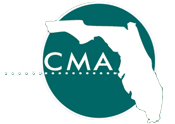 By Stephen Stepp, Deputy City Manager, and John Boehm, Assistant to the City Manager, City of Palm Beach Gardens
By Stephen Stepp, Deputy City Manager, and John Boehm, Assistant to the City Manager, City of Palm Beach Gardens
The City of Palm Beach Gardens has implemented a comprehensive plan for emergency management response. As part of our best practices for responding to hurricanes, the City has created emergency response strike teams. The teams are housed at our six fire stations strategically located across the city. Each strike team is comprised of a double shift of firefighters/paramedics, a squad of police officers, public works crews, and building inspectors. The purpose of these strike teams is to have a diverse group of highly skilled and equipped personnel prepositioned across the city, allowing for faster response after hurricanes to more effectively save lives, protect property, and restore the community.
At the start of a hurricane, the strike teams work to assist the public until the weather makes it unsafe to travel, at which time they hunker down in the reinforced fire stations for food and rest. As the winds subside, crews take to the field to render aid. Public works crews utilize a front loader and other equipment to start clearing the roads to ensure a minimum 12-foot clear path for emergency vehicle response and to provide access to local hospitals. This approach helps resolve road blockages and prevent flat tires that can be caused by debris. In a moderate storm, police and fire units will respond to calls by priority as individual units, while building inspectors begin damage assessment and public works crews work on debris removal, stormwater, and traffic signal generators.
The strike team’s unique value is evident in the case of a major hurricane or catastrophic damage. The strike team stays together as a unit to respond to neighborhoods in a caravan. The front loader goes first to clear the roads, followed by 4WD trucks with debris and stormwater equipment, including chainsaws, winches, pumps, generators, and miscellaneous tools. Next are police and fire/rescue units to save lives and protect property. Simultaneously, building inspectors assess structures while rapidly submitting initial damage reports and photos to the EOC electronically. This allows for situational awareness in the EOC and the ability to coordinate a large area assessment. This information helps determine additional resource allocation and requests while enabling us to provide real-time updates to the County and State.
Each strike team has multiple methods of communication, including fire, police, and public works radios with common channels. Teams are given satellite phones, laptop computers, and cell phones from two different carriers. Each fire station has a Ham radio system and landline phones. Should all communication methods fail, each strike team will operate independently under the direction of a captain with an assigned runner to update the EOC hourly. Pre-staging the strike team allows for a coordinated rapid response of a large contingency of various equipment and personnel with different areas of expertise, reducing the need to travel far distances to provide aid.
Additional strike teams are located at our Category-5 operations center with stockpiled emergency supplies and spare vehicles to respond to the worst areas in need, such as the path of a tornado. These teams have enhanced specializations, including debris management, infrastructure, traffic maintenance, and damage assessment. The damage assessment team has drone capabilities to provide live feeds to the EOC and Operations Center.
The Purchasing Department also plays a key role in our emergency management response by proactively reestablishing vendor contracts before hurricane season begins. This allows the city to coordinate acquiring essential equipment/supplies ahead of time to help speed up emergency response efforts.
Based on our combined experience over the course of numerous hurricanes, the most important piece of equipment has been the front loader. The ability to quickly clear debris from our roadways enables first responders to access neighborhoods faster and accelerates recovery efforts. Major roadways like hospital routes are cleared first, and the clearing is tracked in real time by GPS maps in the EOC.
We have implemented another related best practice to address the issue of winds exceeding 50 mph or other dangerous conditions that force most government agencies to stop their emergency response. We place one or two 10-ton armored vehicles into service to respond to severe life emergencies during the height of the storm. The vehicles are 4WD with run-flat tires, winches, and a thermal imager for response in heavy rain, fog, or darkness. The vehicle is staffed with eight SWAT Team members, including a driver, supervisor, and two SWAT/Fire Paramedics equipped with a stretcher and numerous lifesaving medical supplies. This specialized unit has been successfully used not only for rescues but also to respond to possible looting incidents during hurricanes.
With a commitment to continuous improvement, we expand our capabilities, upgrade equipment, and refine our strategies each year. We are pleased to share what has served as best practices for our city and remain open to further discussions on other successful strategies used elsewhere to more effectively save lives, protect property, and restore the community during hurricane response efforts.




